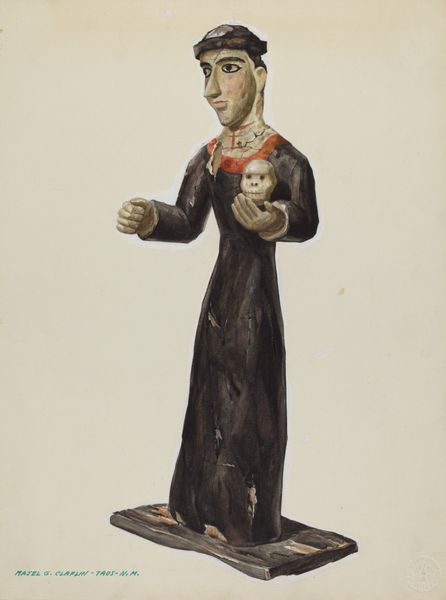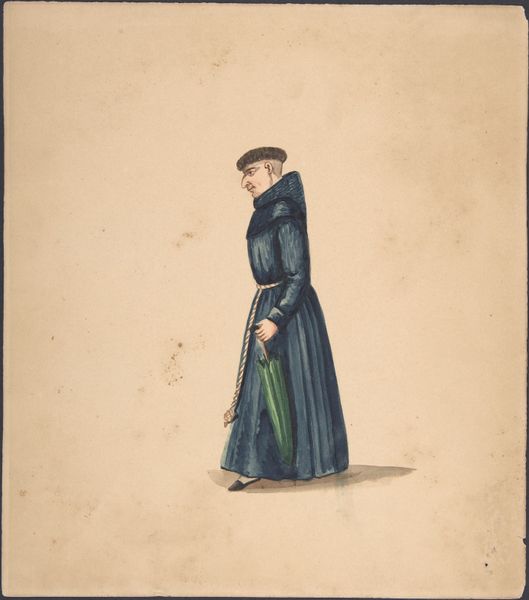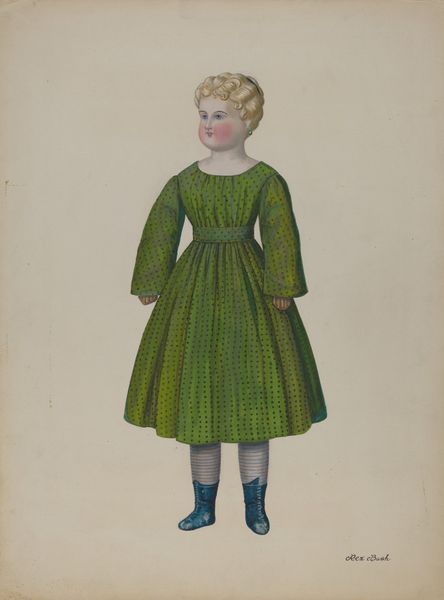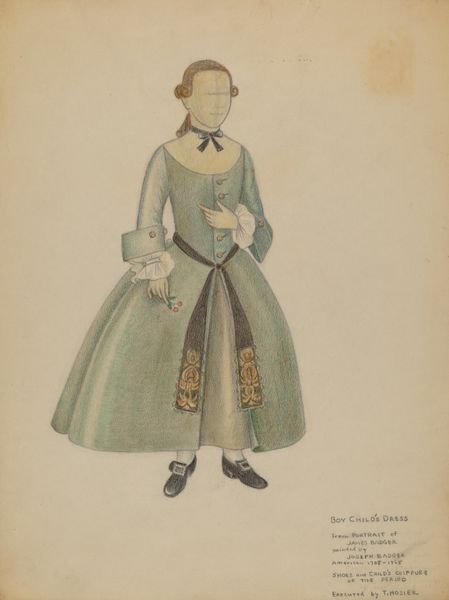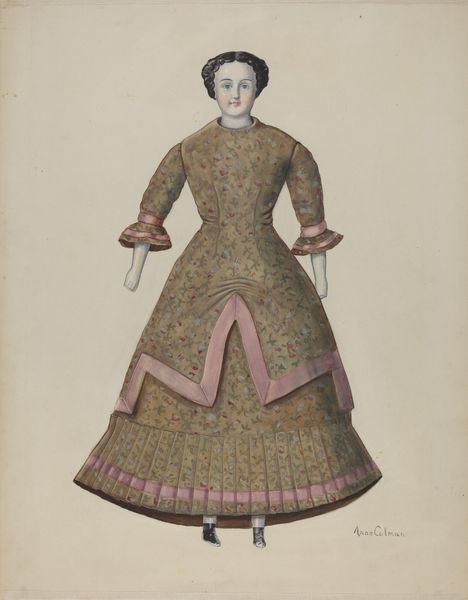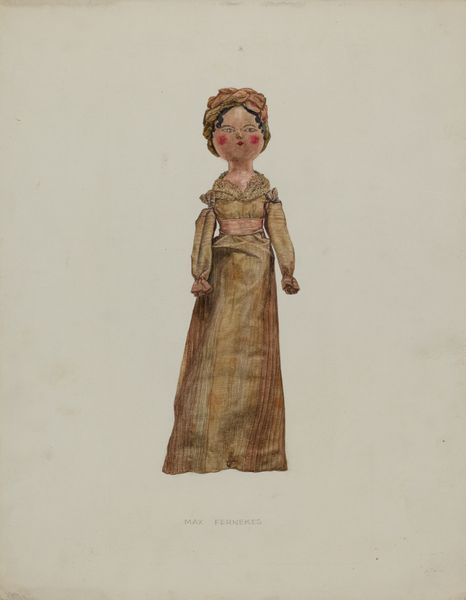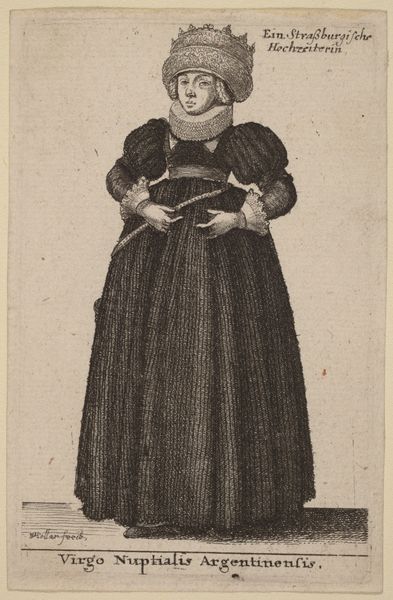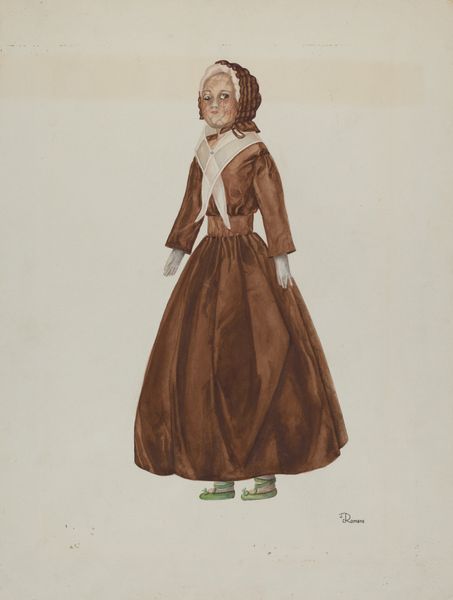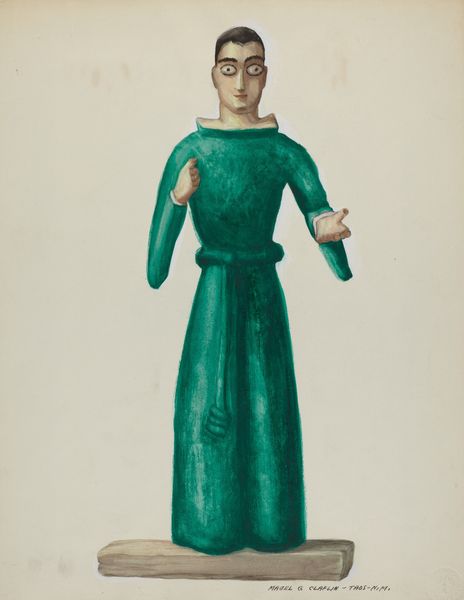
drawing, tempera
#
portrait
#
drawing
#
tempera
#
caricature
#
figuration
#
folk-art
#
portrait drawing
#
portrait art
Dimensions: overall: 36.3 x 27.9 cm (14 5/16 x 11 in.) Original IAD Object: 13"high
Copyright: National Gallery of Art: CC0 1.0
Curator: Looking at this interesting piece titled "Friar - Probably a Santo," made between 1935 and 1942 by Majel G. Claflin. It is executed using tempera in a drawing format. The depiction appears intentionally flattened and stylized. Editor: Immediately, I'm struck by the figure's arresting stare, an almost caricature-like quality. It's as if the subject is simultaneously inviting us in and holding us at a distance, an arresting balance, wouldn't you say? Curator: It indeed strikes that careful balance. Consider also how the almost doll-like proportions combined with the work's title invite association to “Santo” sculptures, often of religious figures found in Latin American folk art, made for both religious and decorative uses. Do you think this drawing then suggests both devotion and a sort of folksy accessibility? Editor: Absolutely, the artist creates an economy of lines, paring down details to a minimum, with dark colors that invite viewers to focus on the formal, abstract, characteristics as a primary driver of this work. Curator: This simplification evokes a sense of cultural memory, doesn't it? Santo sculptures acted as visual touchstones, embodying community history, faith, and resilience. Claflin captures that spiritual inheritance here. It isn’t only in the folk art tradition, though, right? Think of those bold Egyptian portraits, such enduring and unblinking images of eternity... Editor: It’s also worth noticing that although drawing, this figure has almost the density and appearance of wood carving! So those dark colors give depth that then highlights that folk-art connection! The dark dress emphasizes the very particular way the artist plays with this piece's geometric framework as well. The figure and red plinth form a series of clearly distinct shapes working in conversation. Curator: In essence, then, we are peering into a space where devotional representation intersects with the aesthetic and symbolic traditions of folk art; while folk devotion intertwines into a cultural, perhaps psychological need for representation and story telling. Editor: It truly does speak to the power of visual simplification, inviting multiple cultural interpretations without sacrificing clarity or compositional strength.
Comments
No comments
Be the first to comment and join the conversation on the ultimate creative platform.

